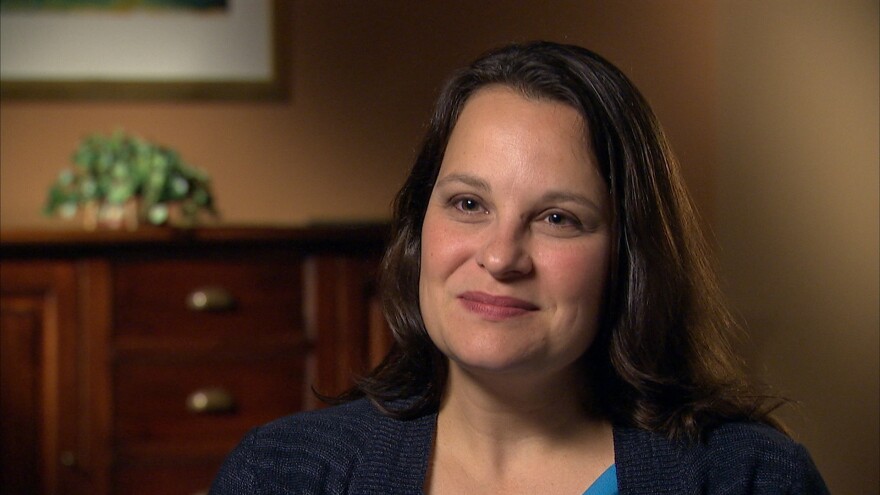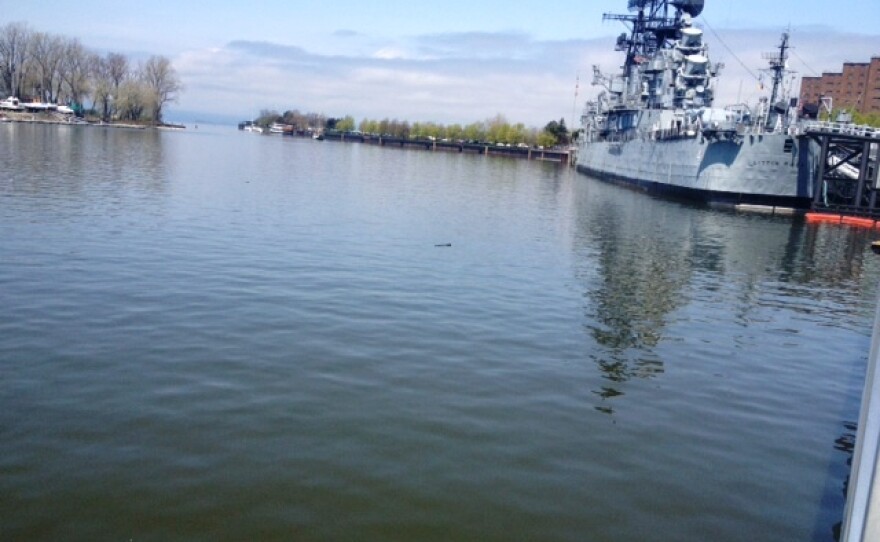All this week, WBFO and WNED-TV are examining Western New York’s water resources in a project called If Our Water Could Talk. While economic development remains an important focus for the Buffalo waterfront, WBFO's Eileen Buckley reports, so is the issue of providing access to our water.

"That’s one of the things when they talk about development, I always say they need to keep this waterfront open for people to get to," said Captain Tom Marks, operator of Great Lakes Fishing Adventures.

Marks has spent nearly 60 years on the waterways of Western New York. "Over the years, we’ve developed the waterfront and the harbor and we walled off our view of the lake. Access is real important. AThe Buffalo waterfront has so much to offer. It’s just one of the, you know, wonders of the world that we have right here, is, you know, all this fresh water," said Marks.
Few American cities can rival the water resources of Buffalo. After decades of missed opportunities, the Buffalo waterfront is beginning to deliver on the promise of becoming the centerpiece of a downtown renaissance.

"It is a mid-sized American city struggling to regenerate itself," said Robert Shibley, dean of the School of Architecture and Planning at the University at Buffalo. "Over the last 30 years, in planning for our downtown, our waterfront corridor, my work at the University of Buffalo has over and over again taken me to the community that says give me access to the water. There’s never a question about that priority."

"It’s basically physical access to the waterfront," said Jill Jedlicka, executive director of Buffalo Niagara Riverkeeper. "Having the opportunity to throw a line in to fish if you want, to be able to see the water instead of walking around a building, to hop in a kayak or canoe, if you like, to access your boat, in a marina. We’re not anti-development. We’re not anti-economic revitalization. That is an important component of what’s happening on our waterfront. But it should be designed and implemented in a way that it’s not going to preclude future public access to a lot of these resources."
In recent years, there has been a lot of development activity at Canalside, with more construction cranes then have been seen in Buffalo for years.

But the construction boom at Canalside has been matched by a focus on smaller, easy to implement strategies designed to draw more people to the water.

"What we hope to create is a walking community. An area in downtown Buffalo with all, there is always something happening so that people will stay down there and, once you get a critical mass, you’ll start to generate some real economic activity," said Robert Gioia, chairman of the Erie Canal Harbor Development Corporation. "This is Western New York’s waterfront. So we really need to make sure that it’s available, it’s accessible. We were once a vibrant waterfront, we should be a vibrant waterfront, and we can be again. It’s an asset that’s been underutilized for decades."
"There was no access. That was the very reason for Buffalo River Fest Park, is we run an event called the Buffalo River Fest. We could not find an area to go on the river to have the fest," said Peg Overdorf, executive director of Buffalo River Fest Park, a group that holds an annual festival along the Buffalo River.

"And it wasn’t until then that people could actually walk up, legally, to the river’s edge to see what was going on in the river, or touch it. Every day you see kayaks in the river and every day you see boaters in the river, you see paddle boats or you see those little paddle bicyclist in the river. It definitely is turning to more of a recreational venue."
Overdorf and others believe the small neighborhood parks and other public access will bring people to the water.
"We've got to be able to get you there. We need to improve that access," said Gioia.

WBFO News found some citizens enjoying the access at Canalside. "What do you think of the access here, now that you can come down and enjoy a lunch on a beautiful day downtown,?" asked Buckley.
"It's great. I actually here everyday it's nice from work to eat lunch here," said Ian Thomas of Buffalo, a downtown employee who was enjoying a sunny afternoon during the lunch hour at Canalside.

Shelly Brown is a Canalside construction worker who was also taking a lunch break. She's pleased with the new access to our waterfront and hopes for more.
"I think its awesome and I love it here, I mean any time I have a chance to come here I do -- I love -- it it's amazing. I wish they would hurry up and do something over at the Outer Harbor," said Brown.
"People love the renaissance. Everybody’s got a new hope for Buffalo, and it’s all about water," noted Overdorf.
Listen for our final installment of If Our Water Could Talk Friday morning when look to the future of the Buffalo River and waterfront. Part IV was co-written with WNED'S John Grant.






